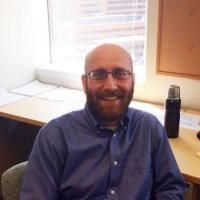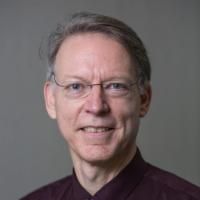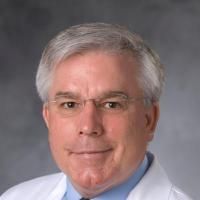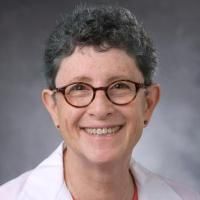Durable Chimerism and Long-Term Survival after Unrelated Umbilical Cord Blood Transplantation for Pediatric Hemophagocytic Lymphohistiocytosis: A Single-Center Experience.
Date
2017-10
Journal Title
Journal ISSN
Volume Title
Repository Usage Stats
views
downloads
Citation Stats
Attention Stats
Abstract
Hemophagocytic lymphohistiocytosis (HLH) is a life-threatening disorder of immune dysregulation characterized by fever, hepatosplenomegaly, cytopenias, central nervous system disease, increased inflammatory markers, and hemophagocytosis. Currently, allogeneic hematopoietic stem cell transplantation is the only curative approach for patients with HLH, with reported survival ranging from 50% to 70% with myeloablative conditioning (MAC) regimens. However, donor availability and transplantation-related mortality associated with conventional MAC are major barriers to success. Unrelated umbilical cord blood transplantation (UCBT) provides a readily available alternative donor source for patients lacking matched related donors. Accordingly, we report the results of UCBT in 14 children treated between 1998 and 2016. All children received standard HLH chemotherapy before UCBT. The median age at diagnosis was 2.7 months (range, .8 to 10.4) and at transplantation was 7.5 months (range, 3.8 to 17). Ten patients received MAC with busulfan/cyclophosphamide/etoposide /antithymocyte globulin (ATG) (n = 5), busulfan/cyclophosphamide /ATG (n = 4), or busulfan /melphalan/ATG (n = 1). Four patients received reduced-toxicity conditioning (RTC) with alemtuzumab/fludarabine/melphalan/hydroxyurea ± thiotepa. Cord blood units were mismatched at either 1 (n = 9) or 2 (n = 5) loci and delivered a median total nucleated cell dose of 11.9 × 107/kg (range, 4.6 to 27.9) and CD34+ dose of 3.1 × 105/kg (range, 1.1 to 6.8). The cumulative incidence of neutrophil engraftment by day 42 was 78.6% (95% confidence interval [CI], 42.9% to 93.4%) with a median of 19 days (range, 13 to 27), and that for platelet (50,000) engraftment by day 100 was 64.3% (95% CI, 28.2% to 85.7%) with a median of 51 days (range, 31 to 94). Six patients developed either grade II (n = 5) or grade IV (n = 1) acute graft-versus-host disease (GVHD); no extensive chronic GVHD was seen. Ten patients (71.4%) are alive and well at a median of 11.2 years after transplantation (range, .85 to 18.25), 9 of whom maintain sustained full donor chimerism after a single UCBT, whereas 1 patient with autologous recovery after first UCBT with RTC has achieved full donor chimerism after a second UCBT with MAC. This series demonstrates that, in combination with standard HLH therapy, UCBT after MAC or RTC conditioning can provide long-term survival with durable complete donor chimerism comparable to that of conventional donors. UCBT should be considered for patients with HLH lacking a fully matched related or unrelated adult donor.
Type
Department
Description
Provenance
Subjects
Citation
Permalink
Published Version (Please cite this version)
Publication Info
Patel, Sachit A, Heather A Allewelt, Jesse D Troy, Paul L Martin, Timothy A Driscoll, Vinod K Prasad, Joanne Kurtzberg, Kristin M Page, et al. (2017). Durable Chimerism and Long-Term Survival after Unrelated Umbilical Cord Blood Transplantation for Pediatric Hemophagocytic Lymphohistiocytosis: A Single-Center Experience. Biology of blood and marrow transplantation : journal of the American Society for Blood and Marrow Transplantation, 23(10). pp. 1722–1728. 10.1016/j.bbmt.2017.06.013 Retrieved from https://hdl.handle.net/10161/24597.
This is constructed from limited available data and may be imprecise. To cite this article, please review & use the official citation provided by the journal.
Collections
Scholars@Duke

Jesse David Troy
I am the Associate Director of Graduate Studies for the Master of Biostatistics program. I am also a co-director of the Clinical Research Training Program. My current research is in cancer therapeutics and palliative care at the Duke Cancer Institute.

Paul Langlie Martin
For most of my career in Pediatric Hematology/Oncology I have focused on the use of stem cell transplant for the treatment of pediatric leukemias (ALL, AML, CML and JMML) and other non-malignant blood disorders, such as sickle cell disease, hemaphagocytic disorders, Wiskott-Aldrich, aplastic anemia, Diamond-Blackfan Anemia, as well as inherited metabolic diseases. In addition to focusing on determining the best use of stem cell transplants for these disorders, I have also been involved in clinical research investigating the prevention and treatment of transplant related morbidity, particularly veno-occlusive disease of the liver, infections and diffuse alveolar hemorrhage. As study chair for the Children's Oncology Group protocol 9904, I was involved in the development, implementation and analysis of a large, international frontline study of childhood acute lymphoblastic leukemia. Results from this study show that a significant number of children with certain favorable cytogenetic abnormalities in their leukemic cells and who have a rapid response to their initial chemotherapy can expect to have a >95% chance of cure when treated with relatively low intensity chemotherapy.
I have concentrated on providing high quality care for high risk leukemia patients who require high intensity therapies, such as stem cell transplant and immunotherapy. As a member of the Pediatric Transplant and Cellular Therapy Division I provide clinical care for these patients. As a member of various cooperative groups and local PI for several drug trials, I have worked to provide better care and more specific therapies for the toxicities associated with stem cell transplant.
I have also collaborated with the Pediatric Immunology Division to provide a life-saving therapy for a small group of patients with thymic dysfunction, which causes severe immunodeficiency. Our clinical team now provides support during these patients hospital admissions for donor thymus tissue implantation. We once again achieved a new record for the number of implanted patients during the 2022-2023 academic year.

Timothy Alan Driscoll
Dr. Driscoll participates in:
-multi-institutional studies for the treatment of high risk neuroblastoma patients using high dose chemotherapy with stem cell transplant and the development of new therapies for high risk neuroblastoma patients.
-Cellular therapies, including Tisagenlecleucel for CD19(+) B-cell ALL and gene therapy for patients with Sickle Cell Disease.

Vinod K. Prasad
1. Expanding the role of umbilical cord blood transplants for inherited metabolic disorders.
2. Impact of histocompatibility and other determinants of alloreactivity on clinical outcomes of unrelated cord blood transplants.
3. Studies to analyse the impact of Killer Immunoglobulin receptors on the outcomes of hematopoietic stem cell transplantation utilizing haploidentical, CD34 selected, familial grafts.
4. Propective longitudinal study of serial monitoring of adenovirus in allogenic transpants(SMAART)patients.
5. Use of mesenchymal stem cells for the treatment of GVHD

Joanne Kurtzberg
Dr. Kurtzberg is an internationally renowned expert in pediatric hematology/oncology, pediatric blood and marrow transplantation, umbilical cord blood banking and transplantation, and novel applications of cord blood and birthing tissues in the emerging fields of cellular therapies and regenerative medicine. Dr. Kurtzberg serves as the Director of the Marcus Center for Cellular Cures (MC3), Director of the Pediatric Transplant and Cellular Therapy Program, Director of the Carolinas Cord Blood Bank, and Co-Director of the Stem Cell Transplant Laboratory at Duke University. The Carolinas Cord Blood Bank is an FDA licensed public cord blood bank distributing unrelated cord blood units for donors for hematopoietic stem cell transplantation (HSCT) through the CW Bill Young Cell Transplantation Program. The Robertson GMP Cell Manufacturing Laboratory supports manufacturing of RETHYMIC (BLA, Enzyvant, 2021), allogeneic cord tissue derived and bone marrow derived mesenchymal stromal cells (MSCs), and DUOC, a microglial/macrophage cell derived from cord blood.
Dr. Kurtzberg’s research in MC3 focuses on translational studies from bench to bedside, seeking to develop transformative clinical therapies using cells, tissues, molecules, genes, and biomaterials to treat diseases and injuries that currently lack effective treatments. Recent areas of investigation in MC3 include clinical trials investigating the safety and efficacy of autologous and allogeneic cord blood in children with neonatal brain injury – hypoxic ischemic encephalopathy (HIE), cerebral palsy (CP), and autism. Clinical trials testing allogeneic cord blood are also being conducted in adults with acute ischemic stroke. Clinical trials optimizing manufacturing and testing the safety and efficacy of cord tissue MSCs in children with autism, CP and HIE and adults with COVID-lung disease are underway. DUOC, given intrathecally, is under study in children with leukodystrophies and adults with primary progressive multiple sclerosis.
In the past, Dr. Kurtzberg has developed novel chemotherapeutic drugs for acute leukemias, assays enumerating ALDH bright cells to predict cord blood unit potency, methods of cord blood expansion, potency assays for targeted cell and tissue based therapies. Dr. Kurtzberg currently holds several INDs for investigational clinical trials from the FDA. She has also trained numerous medical students, residents, clinical and post-doctoral fellows over the course of her career.
Unless otherwise indicated, scholarly articles published by Duke faculty members are made available here with a CC-BY-NC (Creative Commons Attribution Non-Commercial) license, as enabled by the Duke Open Access Policy. If you wish to use the materials in ways not already permitted under CC-BY-NC, please consult the copyright owner. Other materials are made available here through the author’s grant of a non-exclusive license to make their work openly accessible.
